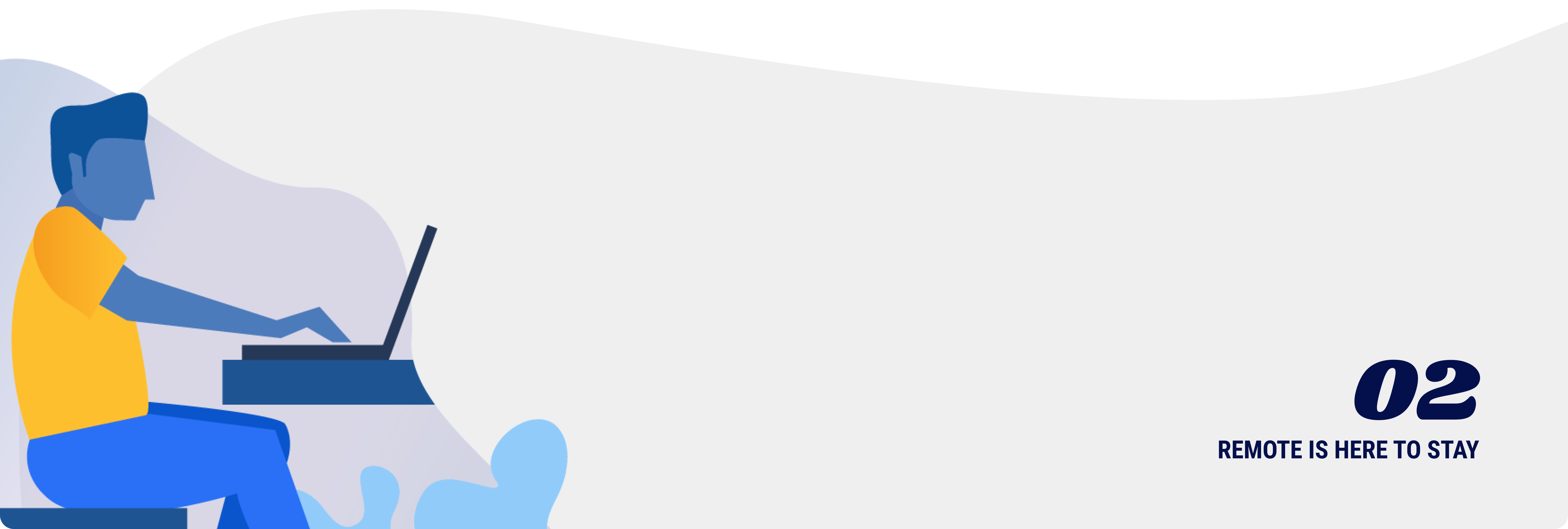
# Remote is here to stay
The resistance to remote has roots in the very place where innovative work culture began. Technology and investment leaders in Silicon Valley found initial success by hosting a lot of young, smart, scrappy people in a shared office for long periods of time. Those very companies invented the tools that make remote work possible.
# Every company is remote
If your company uses email, hosts meetings over video calls, or has shared wiki software - your team is already remote! It's just a spectrum of how remote-friendly your company is willing to be.
Outsourced remote: A team that works with remote contractors or agencies, but employees are in a shared office. They may have a "WFH" policy.
Example: Headspace.
Distributed offices: A company that has multiple offices and headquarters.
Example: Google.
Remote-first: Organizations that support some remote workers, primarily in one country. They likely have an office in at least one location.
Example: Digital Ocean.
Fully remote: A company that has employees who are remote most of the time. They get together for group offsite meetings a few times per year.
Example: InVision.
Global distributed workforce: Employees are working from anywhere at any time. They would rarely (if ever) need to bring the whole company together in the same physical space.
Example: GitLab.
# Who are remote workers?
Making the switch to remote requires a transition period. People must learn to be better communicators, work in a more organized way, and do more to build a social community. Early adopters to the remote movement were stereotypically introverted, highly specialized knowledge workers.
But, modern tools and cultural shifts are making it possible for anyone to take part in this new flexible lifestyle.
# It's not just the gig economy
When companies first started experimenting with remote work, it was often in the form of outsourced projects. When loosely-defined projects accept the lowest bid - teams end up in revision hell with the cheapest possible implementation.
Now it’s possible to find the best possible talent, anywhere in the world. You get to work with them directly as an ongoing member of your team. This can manifest in a variety of ways - full-time employment, ongoing contract work, project-based milestones, or even technical mentorship. Hiring remotely is just another way to build a fantastic and scalable team.
Read about all-remote hiring from the fully remote team at Gitlab.
# Introverts and extroverts
It’s a common misconception that working remotely is only good for introverts. On the Moonlight team, we have a mix of self-described "super extroverts," introverts, and people in-between. You can have a ton of social time as a remote worker, with the added benefit of choosing where and when you work.
Read about working remotely for extroverts from Steph Yiu at Automattic.
# It’s not "work from home"
Yes, some remote workers choose to work from home. But remote can also mean working from a dedicated office in your local city, a co-working space, or a mix of a few different options throughout the week.
When you're always working remotely, it requires a different kind of support system. Companies should still be providing the resources to create a productive and sustainable work environment for each individual.
Read about supporting remote workers at Digital Ocean
# The competitive advantage of remote
When GitLab started their company, "remote" was a new concept. Investors turned down the company because it had no office. Two Sigma Ventures partner Villi Iltchev shared one of the first conversations he had with their CEO & Partner, Sid Sijbrandij:
As they have scaled to over 1000 employees the team turned "remote" from a liability into an asset. Since their talent pool is so widespread, they have diverse perspectives and geographical coverage. And, they have spent less money directly on real estate.
Stripe, InVision, and Digital Ocean are more examples of startups who are scaling remote teams and succeeding. More and more companies are following suit (and following the talent).
We wrote up some simple talking points in case your investor asks about why you’re building a remote team:
Top talent: If you can hire from anywhere, you can hire the best employees - wherever they are. Kong used this to find the top contributors to the Lua programming language, many of whom were living outside the U.S.
Diverse perspectives: Not every person can relocate to San Francisco. Some may have families, student loans, or other realities that make the high cost of living impossible. Others may not have work rights in the USA, or cannot physically commute.
Faster hires: For remote teams, hiring often becomes more demand-constrained than supply-constrained. Opening a "remote" office can radically switch the hiring approach from being proactive to reactive at large companies like Stripe.
Increased productivity: Commutes waste time, and offices are designed for control - not productivity. Remote workers have fewer interruptions, resulting in more deep work - and better results for the business.
Lower average costs: If employees have to pay $3k/mo for a studio apartment, then they need higher salaries. By hiring people outside of major cities, employees can have a higher standard of living on less salary.
The next wave of startups will be remote, and it will become increasingly inefficient and irrational to geo-restrict hiring.

